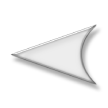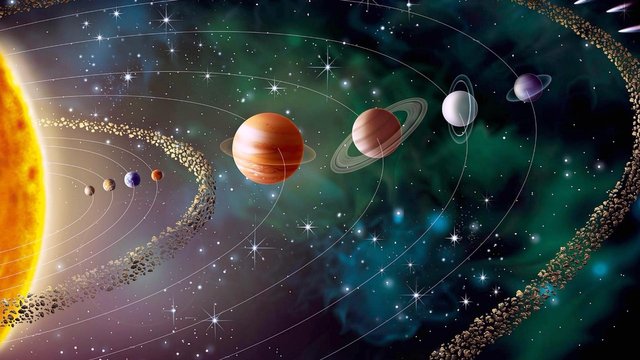Our Solar System - the Genesis #2
The Genesis
After the birth pangs of our sun emerged with the matter was left our earth, our neighboring planets and everything we know about our solar system. In the residual disk, the clumping of dust particles led to the formation of planetesimals, the building elements of the planets.
These kilometer-sized formations had enough mass to unite with other planetesimals by gravity to form larger objects. According to newer models, instabilities could also lead to the formation of planetesimals. The heaviest objects exerted the greatest gravitational forces, attracted matter from a wide circle, and were thus able to grow even faster.
The Proto-Jupiter finally disturbed other planetsimals with its gravitational field and obviously influenced their growth, it also prevented the formation of a larger body between the Mars and Jupiter orbit which led to the formation of the asteroid belt.
The distance of the protoplanets from the young sun had a decisive influence on the formation of the planets. Therefore the inner planets Mercury Venus Earth and Mars with solid surfaces were formed near the sun. In the colder outer regions, the planets were also able to capture volatile gases such as hydrogen, helium and methane. Here the gas giants Jupiter, Saturn, Uranus and Neptune formed. A part of the matter that was not captured by the planets joined to smaller objects, the comets and asteroids. Because they have remained virtually unchanged since the early days of the solar system, their exploration may provide important clues to the genesis of our solar system.
Even though the basic principles are widely understood, there are still many unanswered questions.
The inclination of the solar equator relative to the mean orbital plane of the planets of about seven degrees is a mystery. Due to its dominating mass, the sun is unlikely to have tumbled due to its interaction with the planets.
Possibly a companion named Nemesis is responsible for this or our solar system received a visit from a neighboring star of the primal star cluster, who tilted the large protoplanetary disk by 7 degrees due to his attraction, while the small sun remained unaffected.

 Part 1
Part 1 



Oh Radical!
Hi, @oendertuerk!
You just got a 1.33% upvote from SteemPlus!
To get higher upvotes, earn more SteemPlus Points (SPP). On your Steemit wallet, check your SPP balance and click on "How to earn SPP?" to find out all the ways to earn.
If you're not using SteemPlus yet, please check our last posts in here to see the many ways in which SteemPlus can improve your Steem experience on Steemit and Busy.
May the steem be with you!
Hi @oendertuerk!
Your post was upvoted by @steem-ua, new Steem dApp, using UserAuthority for algorithmic post curation!
Your UA account score is currently 4.929 which ranks you at #1184 across all Steem accounts.
Your rank has improved 2 places in the last three days (old rank 1186).
In our last Algorithmic Curation Round, consisting of 154 contributions, your post is ranked at #22.
Evaluation of your UA score:
Feel free to join our @steem-ua Discord server